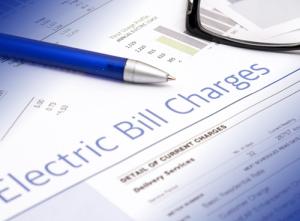We’re constantly saying the word affordability. In speeches. In testimony and orders. In all kinds of writings for that matter.

Affordability. Six loaded syllables. Said, typically, as if what is meant is obvious.
The Old English word geforthian became the word forth and then the word afford by Shakespeare’s day. The medieval meaning, accomplish, morphed into the modern meaning, to bear a burden without too much difficulty. In the twenty-first century, afford, which is a verb, and ability, a noun, can have similar meanings.
We could state the four paramount goals of utilities as reliability, safety, sustainability, and ability. Though this formulation doesn’t quite roll off the tongue.
Instead, we stick afford and ability together to make a grander noun, affordability. This compound more emphatically expresses that fourth goal. That we want utility customers to be able to bear the burden of paying their utility bills without too much difficulty.
It’s not that easy however to know if utility service is affordable. Because a utility serves hundreds of thousands or millions of customers in as many different circumstances combined into a single “customer class.”
One customer can be a retiree living alone on an ample nest egg. Another customer can be a single parent supporting two small children on an overly stretched budget. And another customer can be a large family in a large house keeping the meter spinning with its heavy usage of appliances and devices. You get the idea. What is affordable to one customer isn’t to a second customer or to a third.
Utility rate regulation regulates, well, rates. Not utility bills. This further distorts the burden – or lack thereof – on customers. Not only do the economic situations of customers differ by so much. Their usage and thus their bills differ by so much too. It means some receive bills from their utility several times greater or several times smaller than other customers within the very same community.
At one extreme, a customer can have very limited financial means and receive a utility’s monthly bill amounting to a few hundred dollars. For this customer, affordability of utility service is certainly a major concern. At the other extreme, a customer can have very substantial financial means and receive a utility bill well below a hundred dollars. For this customer, affordability of utility service is a minor concern if it is one at all.
A further complication is that utility customers experience the value of utility services in a most intangible way. Unlike their purchases of goods and services generally, they only vaguely think on the value of utility services. Utilities make life comfortable and convenient but are quite intentionally designed to operate in the background of our daily lives.
The best analogy may be federal taxes. You know you must pay taxes. But the benefits may seem esoteric. Guess that’s why the citizenry commonly applauds politicians who propose tax cuts.
Consider the most representative measure of affordability. The U.S. Commerce Department published last Friday detailed data on Americans’ personal consumption expenditures in January.
The data, compiled so the government can calculate the gross domestic product, tells us how much Americans spent and on what specifically. We can then track the pie slice of consumers’ payments that is swallowed up by utility services.
About two and a half percent of all their expenditures was spent on household utilities. Consumers therefore had the money to spend ninety-seven and a half percent on other goods and services. Put another way, for every forty dollars that consumers paid for goods and services, only one dollar went to pay for utilities.
Including electric service. Americans spent about a percent and a third of their expenditures on electric service. And about three quarters of a percent on water supply and sanitation services. And about four tenths of a percent on natural gas service.
You might be wondering why that natural gas percentage is as low as four tenths of a percent. This is because tens of millions of households in the U.S. do not have gas service, or if they do, they use gas sparingly. This is not true, of course, for electric, water and sanitation services.
As compared with a year before, in January of 2021, Americans paid 13.7 percent more for household utilities in January of 2022. That’s a faster rate of increase than for consumer expenditures in total, which was 11.8 percent, or for goods in total, which was 12.8 percent, or for services in total, which was 11.3 percent.
This faster rate of increase for household utilities was driven by, first of all, the very fast rate of increase for gas service. Americans spent 30 percent more for gas service this January than in the prior year’s January. And second, they spent 13.6 percent more for electric service this January than in the prior January.
As this column noted a few weeks back, Americans spent a historically low percent of their expenditures on electric service in calendar year 2021. Since the first year this data was published, 1959, electricity’s percent has never been as low. So electric service has never been this affordable.
That’s on average, however. Among America’s hundred and thirty million households, electric service is not affordable for a minority of them. Though that’s still millions of families.
Indeed, no matter how far down we drive electricity’s share of what Americans spend, there shall still be millions hard-pressed to pay their utility bills. It’s sad but it’s true.
Suppose the affordability goal really is an imperative to keep pushing until all – or virtually all – customers can bear the burden of utility bills without too much difficulty. Then our legacy regulatory model of setting rates rather than bills, and of setting those rates uniformly for vast heterogeneous customer classes, is a challenging way to get there.


